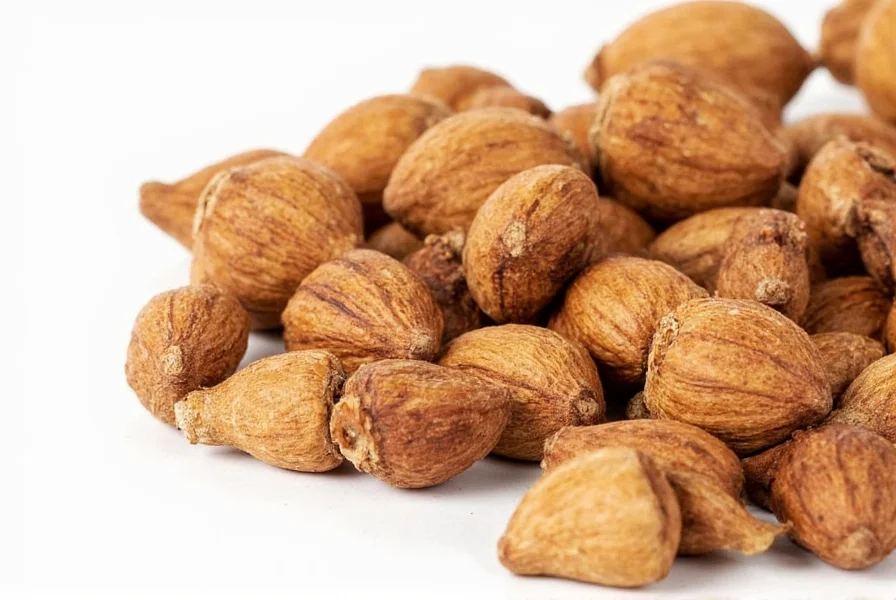Nutmeg, a common kitchen spice derived from Myristica fragrans seeds, transforms from harmless seasoning to potential health hazard when consumed in excessive quantities. This comprehensive guide examines nutmeg toxicity from a medical perspective, separating culinary safety facts from dangerous misconceptions.
Understanding Nutmeg's Chemical Composition
Nutmeg contains several bioactive compounds, with myristicin being the primary concern in toxicity cases. Myristicin, comprising approximately 4-8% of nutmeg's essential oil, functions as a natural insecticide for the plant but affects human neurochemistry when consumed in large amounts. Other compounds like elemicin and safrole contribute to the overall psychoactive and toxic effects.
When ingested in quantities exceeding 5 grams (roughly 1-2 level teaspoons of ground nutmeg), these compounds inhibit monoamine oxidase enzymes and interact with various neurotransmitter systems. The delayed onset of symptoms—typically 3-8 hours after consumption—often leads individuals to mistakenly consume additional doses, worsening the toxicity.

Symptoms and Progression of Nutmeg Toxicity
Nutmeg poisoning follows a distinct timeline with progressive symptoms:
| Time After Ingestion | Common Symptoms | Severe Symptoms |
|---|---|---|
| 1-3 hours | Dry mouth, thirst, facial flushing | |
| 3-8 hours | Nausea, vomiting, dizziness, tachycardia | Anxiety, agitation, hallucinations |
| 8-24 hours | Confusion, drowsiness | Seizures, delirium, hypertension |
| 24-72 hours | Gradual recovery | Psychosis, arrhythmias (rare) |
The severity of symptoms of nutmeg overdose correlates directly with the amount consumed. Cases involving 10+ grams often require emergency medical intervention. Documented cases show significant variability in individual responses, with some experiencing severe reactions at lower doses, particularly when combined with other substances.
Who's at Risk of Nutmeg Poisoning?
Three primary groups face nutmeg toxicity risks:
- Children: Accidental ingestion of even small amounts (1-3 grams) can cause concerning symptoms due to lower body weight
- Recreational users: Those seeking psychoactive effects often consume dangerous quantities (5-30 grams), unaware of the risks
- Culinary users: Generally safe, but potential risk exists with recipe errors or intentional overuse
Research published in Clinical Toxicology indicates that intentional misuse accounts for approximately 65% of nutmeg toxicity cases, often among adolescents and young adults seeking inexpensive psychoactive experiences. The misconception that "natural equals safe" contributes significantly to these dangerous experiments with nutmeg hallucination effects.
Medical Treatment for Nutmeg Toxicity
There's no specific antidote for nutmeg poisoning, making supportive care essential. If someone has consumed a potentially toxic amount:
- Immediate action: Contact poison control or seek emergency care—do not wait for symptoms to appear
- Medical interventions: May include activated charcoal (if recent ingestion), IV fluids, benzodiazepines for agitation, and cardiac monitoring
- Recovery timeline: Most symptoms resolve within 24-48 hours with proper care, though psychological effects may persist longer
Never attempt home remedies for nutmeg poisoning treatment. The delayed symptom onset creates dangerous false security, and complications like hyperthermia or cardiac arrhythmias require professional medical management.

Nutmeg Safety in Culinary Applications
When used normally in cooking and baking, nutmeg presents no health risks. The safe amount of nutmeg consumption for adults falls between 1/4 to 1/2 teaspoon per serving. This provides flavor benefits without approaching toxic thresholds.
Nutmeg offers legitimate health benefits in culinary doses, including:
- Antioxidant properties from terpenes and phenylpropanoids
- Anti-inflammatory effects at normal consumption levels
- Traditional use for digestive support in moderate amounts
The critical distinction lies in dosage. Understanding how much nutmeg is toxic versus safe prevents unnecessary fear while promoting responsible use. Food products containing nutmeg as an ingredient pose no risk—the danger exists only with direct consumption of large quantities of the pure spice.
When to Seek Immediate Medical Help
Contact emergency services if nutmeg ingestion is followed by:
- Chest pain or irregular heartbeat
- Severe confusion or disorientation
- Seizures or loss of consciousness
- Extreme agitation unresponsive to calming efforts
- Symptoms worsening after initial improvement
Provide medical personnel with as much information as possible about the amount consumed and timing. This information significantly improves treatment effectiveness for nutmeg toxicity cases.











 浙公网安备
33010002000092号
浙公网安备
33010002000092号 浙B2-20120091-4
浙B2-20120091-4